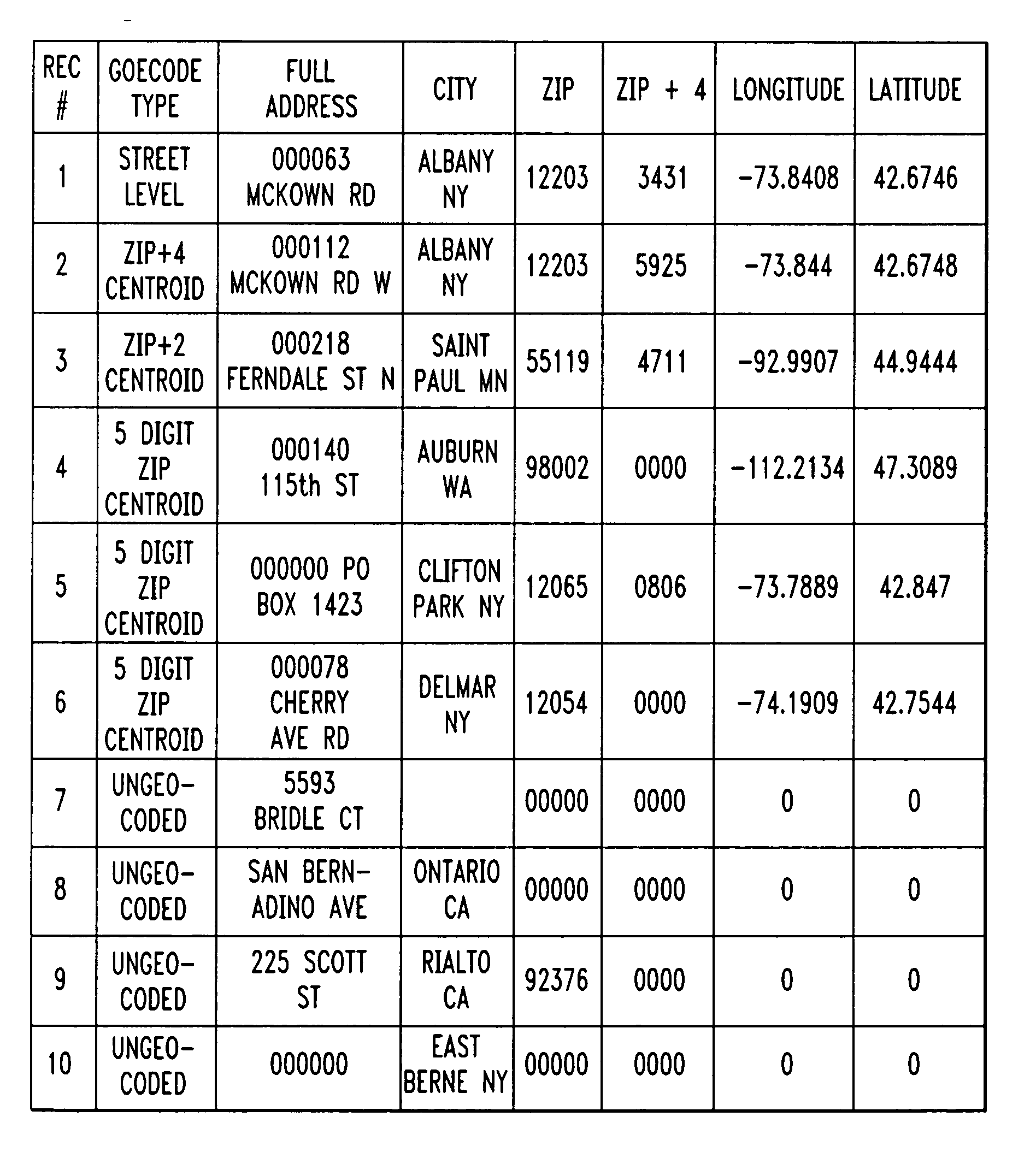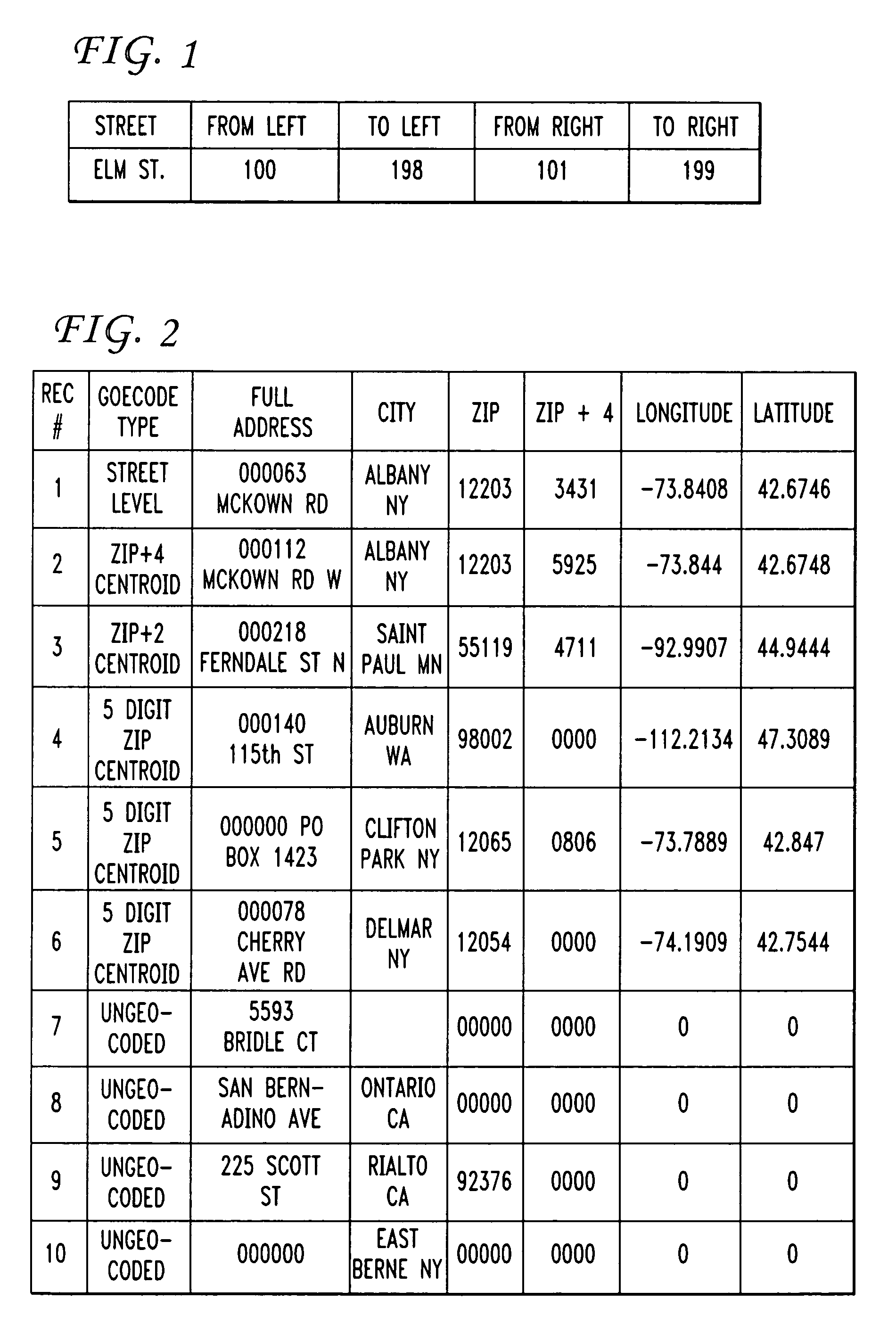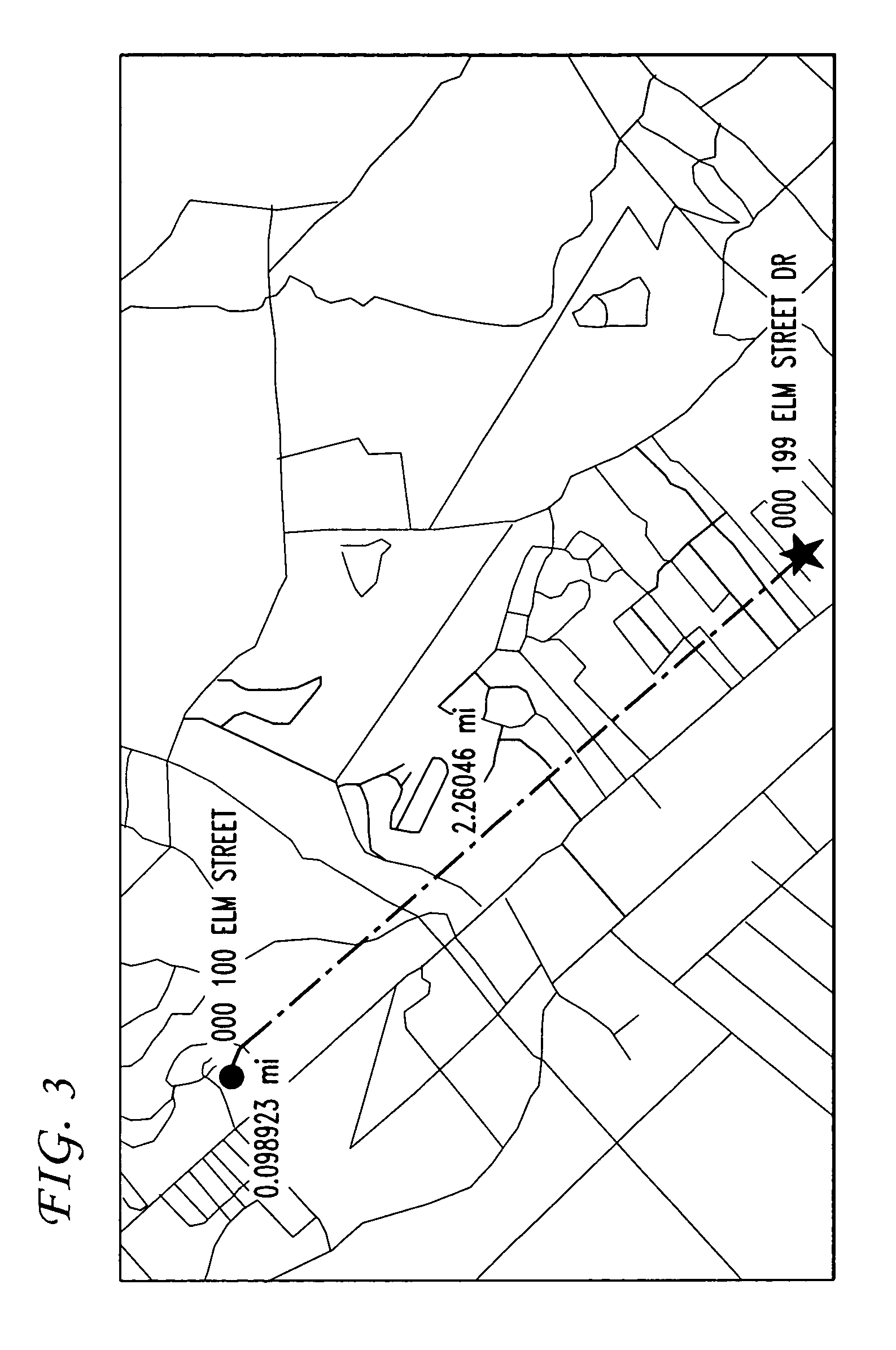Geocoding method using multidimensional vector spaces
a vector space and geocoding technology, applied in pulse techniques, instruments, computing models, etc., can solve the problems of inability to work well, current geocoding technology only examines the zip code field, and current geocoding technology is considered to be imprecis
- Summary
- Abstract
- Description
- Claims
- Application Information
AI Technical Summary
Benefits of technology
Problems solved by technology
Method used
Image
Examples
Embodiment Construction
[0018] A vector is defined as a geometric element possessing both length and direction. A “characteristic vector”, for the purposes of the present invention, is defined as a “locate” match result that is a measure of both the reliability of the match and the tests used to find the match. The characteristic vector, by itself, does not indicate anything about the actual physical location of a match.
[0019] Simple geocoding involves a single test (or set of dependent tests) that is used to generate a single result (the most likely match). In accordance with the teachings of the present invention, multiple tests and multiple data inputs are used to generate a plurality of characteristic vectors, where vector mathematical properties are then exploited to convert imprecise point location results into precise bounding geometries.
[0020] Consider a series of tests t0, t1, . . . , tn and their associated results for a specific point, expressed as “uncertainty” factors u0, u1, . . . , un. Var...
PUM
 Login to View More
Login to View More Abstract
Description
Claims
Application Information
 Login to View More
Login to View More - R&D
- Intellectual Property
- Life Sciences
- Materials
- Tech Scout
- Unparalleled Data Quality
- Higher Quality Content
- 60% Fewer Hallucinations
Browse by: Latest US Patents, China's latest patents, Technical Efficacy Thesaurus, Application Domain, Technology Topic, Popular Technical Reports.
© 2025 PatSnap. All rights reserved.Legal|Privacy policy|Modern Slavery Act Transparency Statement|Sitemap|About US| Contact US: help@patsnap.com



